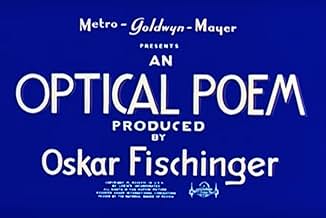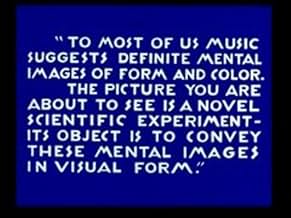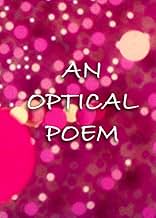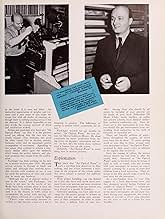Mental imagery of music is visualized with two-dimensional shapes dancing to the rhythm of Franz Liszt's Hungarian Rhapsody No. 2.Mental imagery of music is visualized with two-dimensional shapes dancing to the rhythm of Franz Liszt's Hungarian Rhapsody No. 2.Mental imagery of music is visualized with two-dimensional shapes dancing to the rhythm of Franz Liszt's Hungarian Rhapsody No. 2.
- Director
Featured reviews
Just about anyone who's ever made a music video especially an abstract one owes a debt of gratitude to Oskar Fischinger. This short film is a charming rendition of Liszt's Second Hungarian Rhapsody set to a dazzling series of colored dots, lines, flashes and vivid visual effects that often look like a Piet Mondrian painting come to life. Paul Marquardt's often cheeky orchestration far different from the one usually heard adds a quite inventive series of tonal effects to the film that only underscores the rambunctious appeal of Fischinger's animation. I remember seeing films like this from the 1960's and not realizing anyone had done anything this imaginative with the same format thirty years earlier and I can't for the life of me imagine what unsuspecting moviegoers who caught this in 1937 on a program headlined by an MGM feature of the period made of it!
It's an MGM animated short with Hungarian Rhapsody No. 2 by Franz Liszt playing. It's Technicolor. It's all bright colors and geometric shapes. It's a little experimental. It's interesting. Sometimes, the movement is pretty good, but other times, I want it to switch with the music tempo a lot more. One of the most compelling aspect of this piece of music is its many changes of tempo. The visuals need to match that better. This type of animated experiments have a long Hollywood history. Producer Oskar Fischinger would go on to do a sequence in Walt Disney's Fantasia (1940) which obviously drew inspiration from this.
This is from a collection of art films entitled "Unseen Cinema: Early American Avant-Garde Film 1894-1941". Unlike most of the other films in this set, this one is from a major studio--MGM. Somehow Oskar Fischinger was able to convince the MGM folks to sponsor this art film that consists of hundreds of paper cut-outs that are hung from invisible wires and which are shot, one frame at a time---all in synchronization with music from Franz Liszt. It's all in color and it's amazing that such a non-commercial sort of project was funded by this or any studio.
While it's not at all fun, it is an amazing film to watch. Not only is it wonderfully synchronized, but works so very well. It's all very hypnotic and amazing--even when you see it today. It must have taken forever practically to make this--and perhaps this is why this is Fischinger's only film. Strange but well worth seeing.
While it's not at all fun, it is an amazing film to watch. Not only is it wonderfully synchronized, but works so very well. It's all very hypnotic and amazing--even when you see it today. It must have taken forever practically to make this--and perhaps this is why this is Fischinger's only film. Strange but well worth seeing.
What makes me chuckle about this short film is that MGM actually financed it! Who'd have thought that such attitudes were ever present at the big studios? The intertitle at the start calls the movie a "scientific experiment"*, gawd those guys were dumb. Anyway they let Fischinger get on with his business so I can't complain. The second time I watched it I really was dumbfounded by the MGM logo, for once, ars gratia artis actually meant something! Anyway the film is a visual accompaniment to Liszt's Hungarian Rhapsody no.2. Fischinger chose his music really well because there are lots of sea changes within the piece that allows him to do something totally different at the mood switches. He uses coloured paper circles and stop motion animation, to create a geometrical ballet. He must have done a lot of work because the movements are all very smooth. In fact it's really a masterpiece of technical craft and almost unbelievable how synchronised the animation is to the music.
It brought a big smile to my face and that's really rare.
* "To most of us, music suggests definite mental images of form and colour. The picture you are about to see is a novel scientific experiment. Its object is to convey these mental images in visual form"
It brought a big smile to my face and that's really rare.
* "To most of us, music suggests definite mental images of form and colour. The picture you are about to see is a novel scientific experiment. Its object is to convey these mental images in visual form"
I appreciated the soundtrack more than the abstract art, patterns of balloon-shaped dots that dance across the screen for six minutes while the 2nd Hungarian Rhapsody explodes with musical sounds.
After a few minutes, the short becomes too repetitious to be really novel. In fact, it's the sort of thing the Disney studio was already experimenting with and led to several short subjects, as well as the full-length feature "Fantasia" later on, combining classical music with unique animation.
But this was 1937 and the comparison to Disney was not made at the time. Nevertheless, I found it monotonous to watch and not unique enough, except for the exhilarating classical music performed.
After a few minutes, the short becomes too repetitious to be really novel. In fact, it's the sort of thing the Disney studio was already experimenting with and led to several short subjects, as well as the full-length feature "Fantasia" later on, combining classical music with unique animation.
But this was 1937 and the comparison to Disney was not made at the time. Nevertheless, I found it monotonous to watch and not unique enough, except for the exhilarating classical music performed.
Did you know
- TriviaAs this was released two years before "Fantasia," it's reasonable to assume either Disney or someone who worked for him saw this and realized the possibilities of non-narrative animation set to classical music; certainly the "Toccata and Fugue in D Minor" sequence bears a striking similarity.
- Quotes
Prologue (Title): To most of us music suggests definite mental images of form and color. The picture you are about to see is a novel scientific experiment - Its object is to convey these mental images in visual form.
Details
- Release date
- Country of origin
- Language
- Also known as
- MGM Miniatures (1937-1938 Season) #5: An Optical Poem
- Production company
- See more company credits at IMDbPro
- Runtime6 minutes
- Aspect ratio
- 1.37 : 1
Contribute to this page
Suggest an edit or add missing content




















